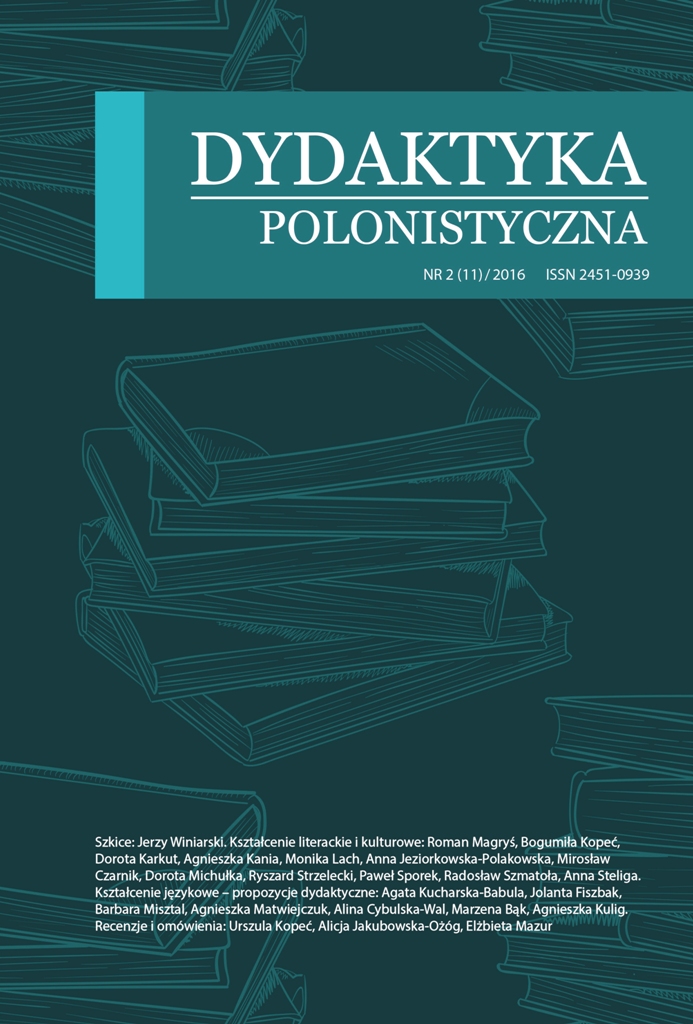Pod niebem tożsamości życia i śmierci… Jak rozmawiać z uczniami o doświadczeniach z czasów wojny
Abstrakt
The article, targeting Polish language secondary school teachers, relates to the way of interpreting the theme of II World War with literature students. The proposed work of Adolf Rudnicki Ginący Daniel reveals not just the broad historic perspective of those living in the capital during the Extermination but also creates a great possibility for numerous interpretations. Ginący Daniel clearly conforms to the requirements of Polish language curriculum for the IV stage of education, in particular the part relating to literary context of discussed works. The Rudnicki’s text gives opportunity to make reference to Pamiętnik z powstania warszawskiego by Miron Białoszewski, listed in the list of literary works for III stage of education. There is also a possibility to make an attempt to indicate collective locations of Jewish and Polish literature, citing Icchoka Lejba Pereca’s work Między dwiema górami. Moreover, an autobiographical context can be applied to start a discussion about Rudnicki’s literary works. Lastly, numerous biblical references, in the article narrowed down to Book of Daniel, are used to analyse and interpret Ginący Daniel in the way that students have a possibility to enjoy a real literary adventure.Pobrania
Opublikowane
2016-12-15
Jak cytować
Jeziorkowska-Polakowska, A. (2016). Pod niebem tożsamości życia i śmierci… Jak rozmawiać
z uczniami o doświadczeniach z czasów wojny. Dydaktyka Polonistyczna, 11(2), 72–85. Pobrano z https://journals.ur.edu.pl/dydpol/article/view/5405
Numer
Dział
KSZTAŁCENIE LITERACKIE I KULTUROWE


